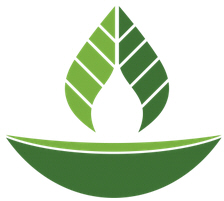Renewable Energy Projects
 In March, 2021, UUAA enrolled in UUA's Green Sanctuary 2030 certification program, for UUAA, a re-certification program, since many congregants worked hard to achieve Green Sanctuary certification in 2003. The certification program has now been updated and expanded, notably to include involvement with climate/ environmental justice projects impacting vulnerable communities.
In March, 2021, UUAA enrolled in UUA's Green Sanctuary 2030 certification program, for UUAA, a re-certification program, since many congregants worked hard to achieve Green Sanctuary certification in 2003. The certification program has now been updated and expanded, notably to include involvement with climate/ environmental justice projects impacting vulnerable communities.
Green Sanctuary 2030 and UUAA's Vision 20/50
Entering the Green Sanctuary 2030 process gives us a good framework for pursuing the goals in UUAA's Congregational Vision. It provides resources and connects us with other UU's who see these issues as essential to our faith; It provides an external accountability of our actions, allows us to start implementing without inventing our own process. Most of all, the goals of this program address all three of UUAA's vision priority areas. The program's vision:
A world that is sustainable and just for humanity and for the whole of the web of life, including present and future generations.” (Vision of Green Sanctuary 2030, from Green Sanctuary 2020: A Faithful Response to Climate Urgency)
Stages of Green Sanctuary 2030
Green Sanctuary 2030 re-certification will be a multi-year pursuit that the program organizes into stages. While it is helpful to see these as ordered progressive stages, realistically the stages will overlap for different projects. For example, UUAA already has a carbon-neutrality project that was assessed and is underway! Other projects may not be discovered until much later.
Stage 1
-
Reflect on Where We are Now/ Write a Congregational Profile
-
Form a Team to Oversee the Process & Get the Congregation Informed and Involved
Our UUAA GS2030 Congregational Profile looks at our past environmental actions, our historical and current surrounding communities, and early thoughts about our climate / environmental action goals.
Please read and reflect on our Congregational Profile (edited, just to remove the bookkeeping bits).
Discussions have started on how climate and environment learning can be integrated into youth SGD programs, forums, and woven into many overlapping work by a range of UUAA groups.
Stage 2 - Assess UUAA's Opportunities
Get UUAA groups together to learn about ongoing projects, brainstorm and evaluate opportunities for
- Mitigating the climate-change crisis.
- Adapting and building resilience to impacts of the crisis.
- Securing justice by collaborating with marginalized communities most impacted by but least responsible for the crisis.
In the summer of 2020 we began working on mitigation and resilience by working with the University of Michigan Graham Sustainability Institute to evaluate what UUAA would need to do to reach carbon neutrality. Plans are being made and that project is underway.
Discussions are just beginning for bringing various groups together to find projects already in progress at UUAA or projects that our social justice and community groups might do collaboratively-- projects internal to UUAA and in collaboration with community groups.
At the end of this stage, we will be in conversation with the GS2030 committee about their perspectives on our goals and find out about resources they may be able to provide.
Stage 3- Action Planning
We will create an overall UUAA action plan that addresses aspects of climate justice / environmentalism as defined in the GS2030 program.
MITIGATION -- action to reduce the causes of the global warming trend of climate change. Mitigation is essential for climate justice.
ADAPTATION AND RESILIENCE - Adaptation is the process of (a)reducing vulnerabilities to the harmful effects of climate change (b) making the most of potentially beneficial opportunities associated with positive responses to the crisis. Resilience is thecapacity to maintain function in the face of external stresses created by the climate-change crisis.
:JUSTICE - Working in partnership with communities who experience and confront the reality thatthe greatest impacts of the climate crisis are disproportionately imposed on those (a) historically oppressed and least responsible for the crisis (b) with the fewest resources with which to face the crisis while already under environmental stresses,and(c) future generations.
The plan will include the measures we will use to define success for reaching our goals.
Green Sanctuary 2030 Vision / Mission
Vision
A world that is sustainable and just for humanity and for the whole of the web of life, including present and future generations.
Outcome
A Unitarian Universalist culture that is characterized by bold, collaborative, urgent, effective, action to mitigate the climate crisis, build resilience and adaption to climate change, and secure environmental and climate justice.
Mission
Green Sanctuary provides structure, leadership and support, in broad collaboration, for the UU faith community to engage in an ambitious environmental and climate justice movement that seeks to live fully our seventh and eighth principles and achieve our vision of a sustainable and just world for all.
Outcome
UU congregations have the knowledge, resources, and support to engage in an ambitious climate-action and Environmental Justice /Climate Justice movements that seek to honor the interconnected web of life and achieve our vision of a viable and just world for all.
